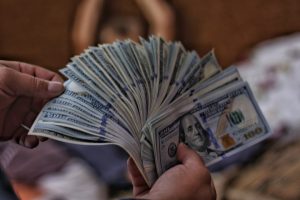Forex, or foreign exchange, is the largest financial market in the world, with an estimated daily turnover of $5.1 trillion. It involves the buying and selling of currencies from around the world, with the goal of making a profit from the fluctuations in their exchange rates.
One of the key aspects of Forex trading is the concept of a stop out level. This refers to a predetermined level at which a trader’s account is automatically closed out, or stopped out, due to insufficient funds to cover their open positions.
The stop out level is typically set by the broker, and is designed to protect both the trader and the broker from large losses. If a trader’s account balance falls below the stop out level, they will be unable to make any further trades until they deposit more funds into their account.
The stop out level is usually set at a percentage of the account’s margin, which is the amount of money required to open and maintain a position. For example, if a trader has a margin of $1,000 and the stop out level is set at 50%, their account will be automatically closed out if their account balance falls below $500.
The purpose of the stop out level is to prevent traders from losing more money than they can afford. This is especially important in Forex trading, where the market can be highly volatile and unpredictable. By setting a stop out level, traders can limit their losses and protect their capital.
However, it’s important to note that the stop out level is not a guarantee against losses. If the market moves against a trader’s position, they may still lose more than their account balance, even if the stop out level is triggered.
In addition to the stop out level, Forex traders also use other risk management tools to protect their investments. One common strategy is to use stop-loss orders, which are instructions to close out a position if it reaches a certain price level.
Stop-loss orders are different from stop out levels in that they are set by the trader, rather than the broker. This gives traders more control over their trades and allows them to limit their losses in a more precise way.
Another important risk management tool is the use of leverage. Forex trading typically involves high levels of leverage, which means that traders can control large amounts of currency with relatively small amounts of capital.
While leverage can increase a trader’s potential profits, it also increases their potential losses. As such, it’s important for traders to use leverage carefully and to understand the risks involved.
In conclusion, the stop out level is a crucial aspect of Forex trading that helps to protect traders and brokers from excessive losses. By setting a predetermined level at which a trader’s account is closed out, traders can limit their losses and protect their capital. However, it’s important for traders to also use other risk management tools, such as stop-loss orders and careful use of leverage, to ensure that they are trading responsibly and minimizing their risks.





